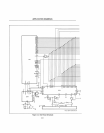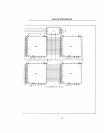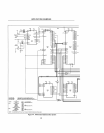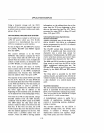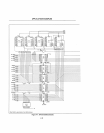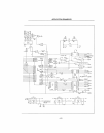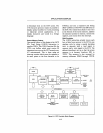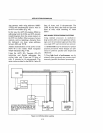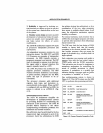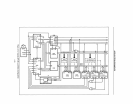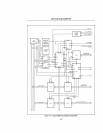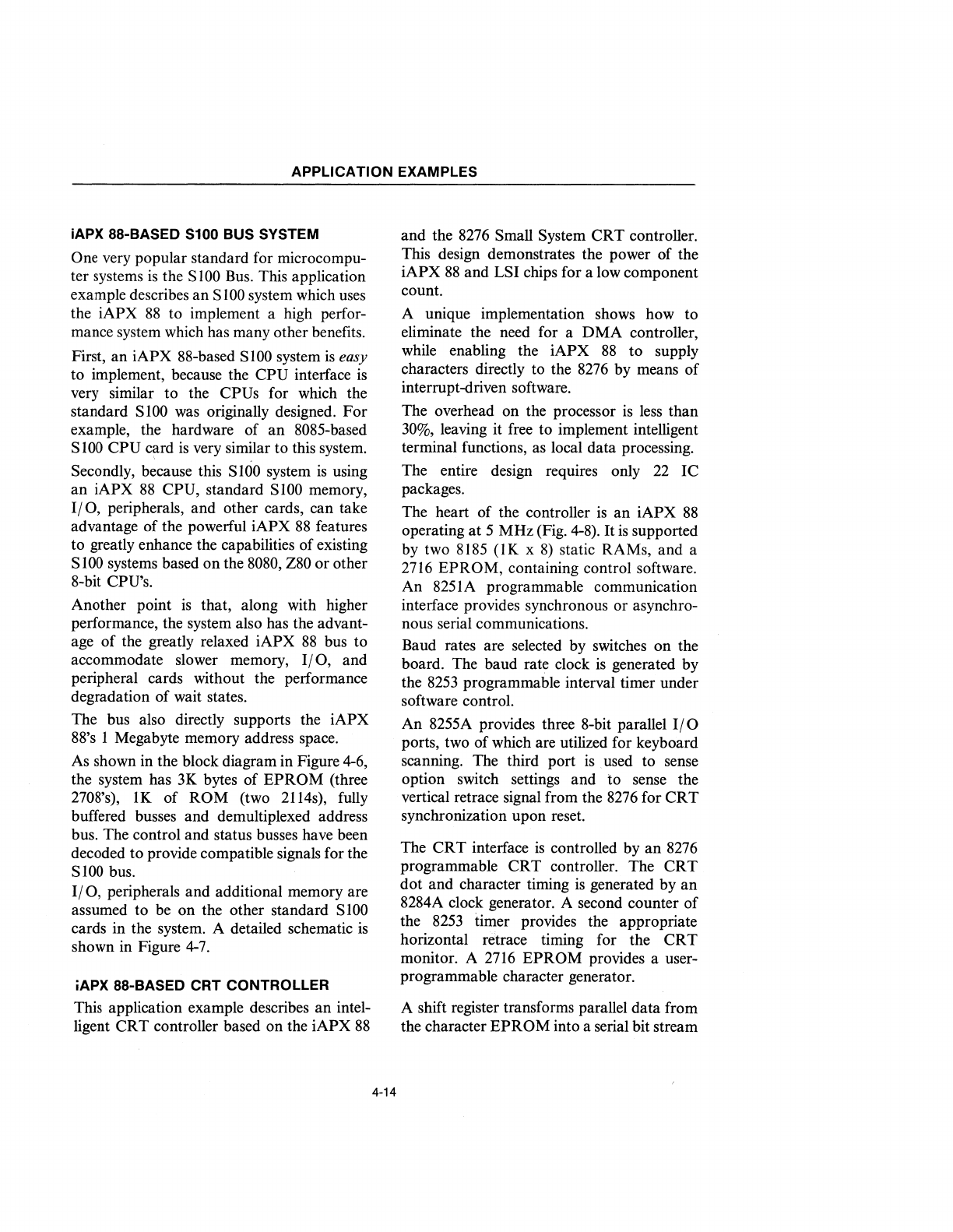
APPLICATION EXAMPLES
iAPX 88-BASED
$100 BUS SYSTEM
One very popular standard for microcompu-
ter systems
is
the S
100
Bus.
This application
example describes an S
100
system which
uses
the iAPX
88
to implement a high perfor-
mance system which has many other benefits.
First, an iAPX 88-based S
100
system
is
easy
to implement, because the CPU interface
is
very similar to the CPUs for which the
standard
SIOO
was
originally designed.
For
example, the hardware of
an
8085-based
S
100
CPU
c!lrd
is
very similar to this system.
Secondly, because this
SIOO
system
is
using
an
iAPX
88
CPU, standard
SIOO
memory,
1/0,
peripherals, and other cards, can take
advantage of the powerful iAPX
88
features
to greatly enhance the capabilities of existing
S
100
systems based on the
8080,
Z80
or
other
8-bit CPU's.
Another point
is
that, along with higher
performance, the system also has the advant-
age
of
the greatly relaxed iAPX
88
bus to
accommodate slower memory,
1/0,
and
peripheral cards without the performance
degradation
of
wait states.
The bus also directly supports the iAPX
88's 1 Megabyte memory address space.
As shown in the block diagram in Figure
4-6,
the system has 3K bytes of
EPROM
(three
2708's),
lK
of
ROM
(two 2114s), fully
buffered busses and demultiplexed address
bus. The control and status busses have been
decoded to provide compatible signals for the
SIOO
bus.
1/0,
peripherals and additional memory are
assumed to be on the other standard S
100
cards in the system. A detailed schematic
is
shown in Figure
4-7.
iAPX 88-BASED CRT CONTROLLER
This application example describes
an
intel-
ligent CRT controller based on the iAPX
88
4-14
and the
8276
Small System
CRT
controller.
This design demonstrates the power of the
iAPX
88
and LSI chips for a low component
count.
A unique implementation shows how to
eliminate the need for a
DMA
controller,
while enabling the iAPX
88
to
supply
characters directly to the
8276
by means
of
interrupt-driven software.
The overhead on the processor
is
less
than
30%,
leaving it free to implement intelligent
terminal functions, as local data processing.
The entire design requires only
22
I C
packages.
The heart of the controller
is
an
iAPX
88
operating
at
5 MHz (Fig.
4-8).
It
is
supported
by two
8185
(1
K x
8)
static RAMs, and a
2716
EPROM, containing control software.
An 8251A programmable communication
interface provides synchronous or asynchro-
nous serial communications.
Baud rates are selected by switches on the
board. The baud rate clock
is
generated by
the
8253
programmable interval timer under
software control.
An 8255A provides three 8-bit parallel
1/0
ports, two of which are utilized for keyboard
scanning. The third port
is
. used to sense
option switch settings and to sense the
vertical retrace signal from the
8276
for
CRT
synchronization upon reset.
The
CRT
interface
is
controlled by
an
8276
programmable CRT controller. The
CRT
dot and character timing
is
generated by an
8284A clock generator. A second counter of
the
8253
dmer provides the appropriate
horizontal retrace timing for the
CRT
monitor. A
2716
EPROM
provides a user-
programmable character generator.
A shift register transforms parallel data from
the character
EPROM
into a serial bit stream



